The Sand Lance Have Landed!
No, not on the moon.  In San Pareil in Parksville.
In San Pareil in Parksville. 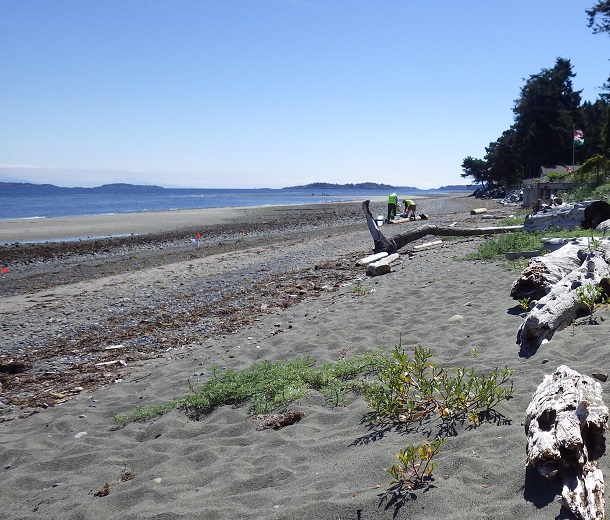
Last month we documented for the second year in a row that sand lance spawn on the beach at San Pareil in December.
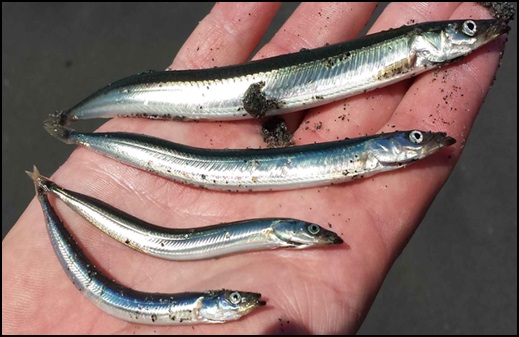
Forage fish such as sand lance are the cornerstone of marine food webs, playing an important role in the diets of salmon, humpback whales, porpoise, sea lions, seals, and marine birds. Sand lance lay tiny eggs (1mm) on pebble and sand beaches just below the high-tide line. Activities like development or construction work on shorelines can have a detrimental effect on forage fish populations by destroying eggs and embryos. For that reason, the Department of Fisheries and Oceans (DFO) has "timing windows" which 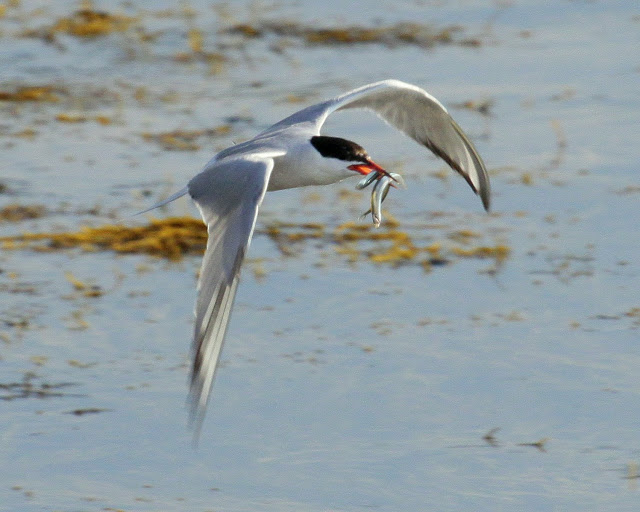 are periods when it is safe to conduct work on shorelines without damaging fish and fish habitat. Unfortunately, the winter timing window for fish is December 1 to February 15. So far, we have only found evidence of sand lance spawning on San Pareil beach in December, when it is assumed safe for shoreline disturbance.
are periods when it is safe to conduct work on shorelines without damaging fish and fish habitat. Unfortunately, the winter timing window for fish is December 1 to February 15. So far, we have only found evidence of sand lance spawning on San Pareil beach in December, when it is assumed safe for shoreline disturbance.
So what evidence are we referring to? Well, in June 2018, volunteers were trained in identifying and mapping forage fish spawning sites under the instruction of Ramona de Graaf, Independent Researcher and Co-ordinator of the Shore Spawner's Alliance. This included collecting sand samples below the high-tide lines and filtering and processing the sand through a series of sieves to collect the right sized sand grains to which eggs would attach. Too small to be seen with the naked eye, the processed sand is placed under a microscope and searched for eggs and embryos.
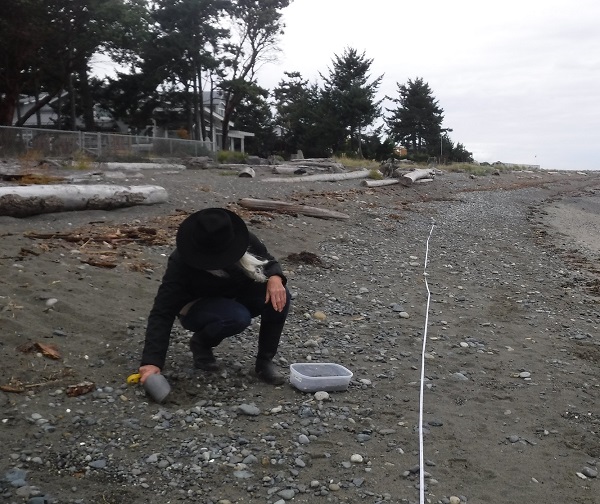
MVIHES volunteers began collecting sand samples from the beach at San Pareil on a monthly basis in 2018 and continue to do so. You may remember that on December 5, 2018 we actually found sand lance that contained ripe eggs and milt on the beach, proving the fish were using the beach as a spawning ground. In May 2019, MVIHES joined forces with the Mount Arrowsmith Biosphere Region Research Insititute (MABRRI) based out of Vancouver Island University (VIU) that was also conducting forage fish surveys. Nancy Hancock collects sand samples, Oct 15, 2019.
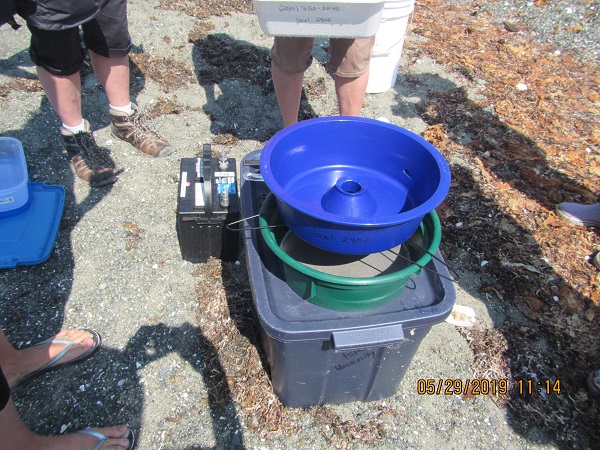 MABBRI has lent us an apparatus called a vortex, shown in the photo at right, which makes the separation of eggs from the sand easier following sieving.
MABBRI has lent us an apparatus called a vortex, shown in the photo at right, which makes the separation of eggs from the sand easier following sieving.
On December 6, 2019 two of the sand samples we collected at San Pareil contained sand lance eggs. You can imagine how satisfying it was after all those months of sampling to finally find eggs. The longest egg hunt of our lives. Many thanks to MABRRI and VIU for the microscope work.
The importance of this work is that the beach in San Pareil can now be identified as one where protection of sand lance spawining activity is crucial. MVIHES endeavors to inform the residents of San Pareil of the importance of their beach for sand lance production. We will also urge DFO to change the winter timing window for shoreline work, at least for this area.
It will be interesting to see what our sampling in the 2020 will reveal. Stay tuned!